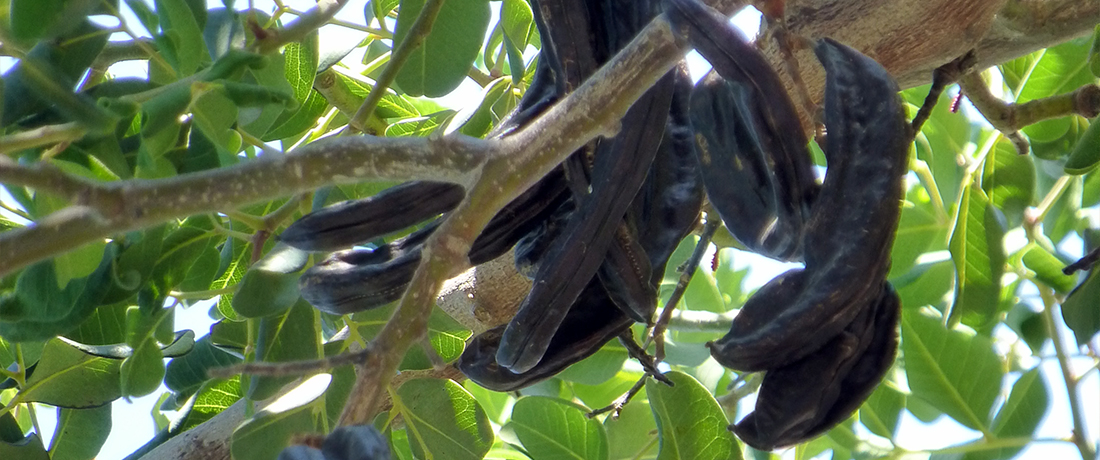
 Important note about plant availability. Important note about plant availability.There are hundreds of factsheets on our website provided for your information. Not all plants will be available at all times throughout the year. To confirm availability please call (03) 8850 3030 and ask for the nursery. |
Ceratonia siliqua in the Fabaceae family
Carob trees feature edible pods, the seeds are not consumed. They grow to become quite large trees when mature, as large as 10m x 10m. They have an extensive network of shallow roots, as well as a tap root to as deep as 20 m. They can tolerate temperatures to -5 deg C and are very long lived. A carob tree can crop for up to 400 years! The pods are like dates, but with a harder texture. They are also chewier than dates.
Why grow carob?
When roasted, the pods taste like chocolate. In the past carob chocolate has developed a bad name because of high palm oil content used, but there are sustainable options available today. Be sure to read the ingredients and look for Certified Sustainable Palm Oil. Carob is very sweet and a good, nutritious snack which is high in calcium and protein. It is an excellent subsistence food, in times of war many have survived off carob along with other wild foods.
The Mature pods, when thoroughly dry, will store for many years and can also be used to make wine or brandy.
Other uses
The carob is an evergreen, rounded, drought tolerant and very ornamental tree. They are sometimes used as windbreaks as well as shade and fodder plants for animal pastures. Carob can be used as a treatment for diarrhoea! They can also be clipped into a hedge.
Growing carob
Carobs are similar to olives in adaptability. They can be grown in a large pot and are tolerant of drought and poor soils, although better crops will be produced in areas of higher rainfall. They are wind pollinated, with flowers in early winter. Pods are harvested during autumn. Fertilise with small amounts of well rotted animal manure
Pollination
Both male and female trees are required for pollination. Most trees bought for ornamental purposes are seedlings with unknown gender.
Varieties
Clifford
Hermaphrodite, self fertile. Medium size, high yield of good quality beans. 50%+ sugar. Early fruit bearer.
Casuda
Female, needs a hermaphrodite for pollination. Medium sized tree with a high yield of medium beans. 50%+ sugar. Many consider this variety to have the best flavour, it is not quite as sweet as other varieties.
